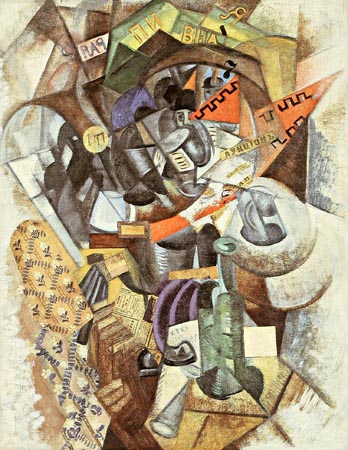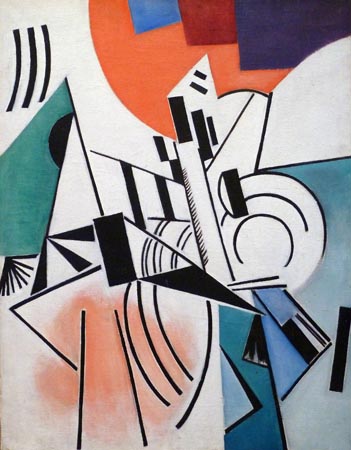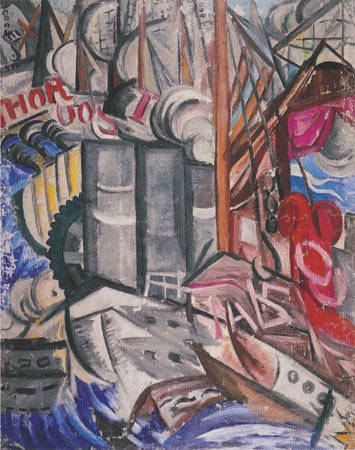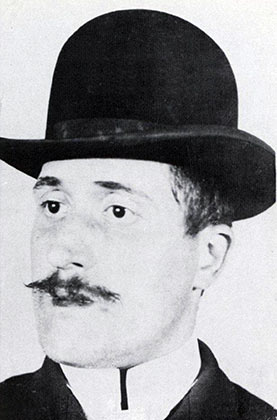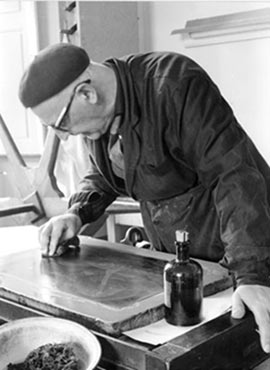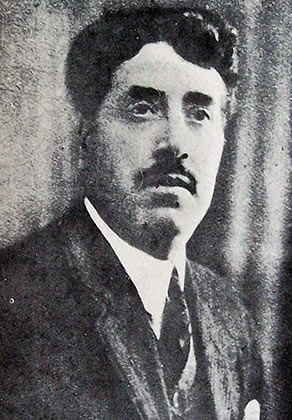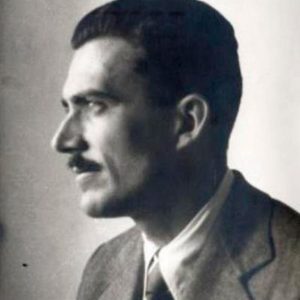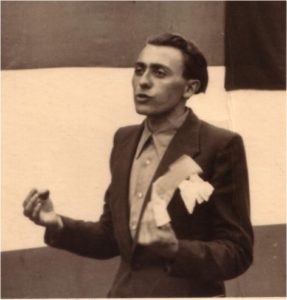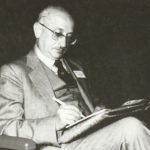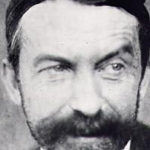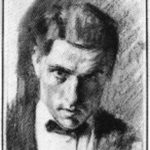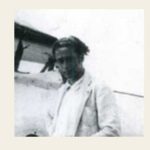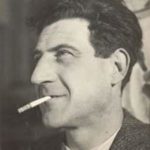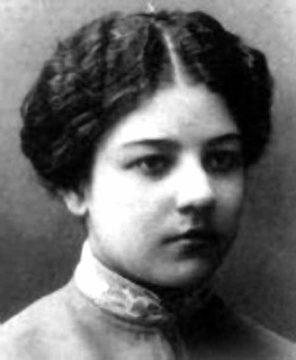
Rozanova Olga – Olga Vladímirovna Rózanova
(English)
Olga Rozanova was born in Melenki, a small town near Vladimir. Her father, Vladimir Rozanov, was a district police officer and her mother, Elizaveta Rozanova, was the daughter of an Orthodox priest. She was the family’s fifth child; she had two sisters, Anna and Alevtina, and two brothers, Anatolii and Vladimir. Rozanova’s father died in 1903, and her mother became the head of the household. She graduated from the Vladimir Women’s Gymnasium in 1904 and, interested in the avant-garde, moved to Moscow.
Artistic career
After arriving in Moscow, she attended the Bolshakov Art School, where she worked under Nikolai Ulyanov and sculptor Andrey Matveev. She audited courses at the Stroganov School of Applied Art in 1907 but was not accepted for admission. After this, she trained in the private studio of Konstantin Yuon. From 1907 to 1910, fellow drawing and painting students studying in these private studios included Lyubov Popova, Nadezhda Udaltsova, Aleksei Kruchenykh, and Serge Charchoune.
By 1910, she was fairly well-known in Russian art circles. She moved to St. Petersburg and joined Soyuz Molodyozhi (Union of Youth) in 1911; two of her canvases, Nature-morte and The Cafe debuted at the second Soyuz Molodyozhi exhibition in April 1911. She would submit her canvases to their group exhibitions until 1913. Razanova briefly studied at the art school of Elizabeta Zvantseva, which housed many Russian art nouveau artists. In January 1912, her two works, Portrait and Still-Life, appeared at the next Soyuz Molodyozhi exhibition in January 1912. This exhibition was the first appearance of the Donkey’s Tail, a Moscow-based artistic group led by Mikhail Larionov. Rozanova later traveled to Moscow to try to establish joint projects between the two groups; these negotiations proved to be unsuccessful. Soyuz Molodyozhi disbanded in 1914.
From 1913 to 1914, Cubo-Futurist ideas appeared in her work, but she appears to have been especially inspired by Futurism. Of all of the Russian Cubo-Futurists, Rozanova’s work most closely upholds the ideals of Italian Futurism. During Filippo Tommaso Marinetti’s visit to Russia in 1914, he was very impressed with her work. Rozanova later exhibited four works in the First Free International Futurist Exhibition in Rome, which took place from April 13 to May 25, 1914. Other Russian artists featured in the exhibition included Alexander Archipenko, Nikolai Kulbin, and Aleksandra Ekster.
She met the poet Aleksei Kruchenykh in 1912; he then introduced her to the Russian Futurist concept of zaum (translated as “beyonsence”) poetry, a language with no fixed meanings and constant neologisms, which is probably used by birds. Rozanova would write her own poetry in that style, and also illustrated books of zaum poetry, two examples being A Little Duck’s Nest of Bad Words and Explodity (both 1913). With Kruchenykh, she would invent a new kind of Futurist book, the samopismo, where the illustrations and the text would he literally connected.
Rozanova joined the avant-garde group Supremus that year, which was led by former fellow Cubo-Futurist Kazimir Malevich. By this time, her paintings has developed from the influences of Cubism and Futurism, and took an original departure into pure abstraction, where the composition is organized by the visual weight and relationship of color.
In the same year she exhibited at the 0,10 Exhibition, and, together with other Suprematist artists (Kazimir Malevich, Aleksandra Ekster, Nina Genke, Liubov Popova, Ksenia Boguslavskaya, Nadezhda Udaltsova, Ivan Kliun, Ivan Puni and others) worked at the Verbovka Village Folk Centre.
From 1917 to 1918 she created a series of non-objective paintings which she called tsv’etopis’. Her Non-objective composition, 1918 also known as Green stripe anticipates the flat picture plane and poetic nuancing of color of some Abstract Expressionists.
Death and legacy
She died of diphtheria at the age of 32 in Moscow in 1918, following a cold she contracted while working on preparations for the first anniversary of the October Revolution.[10]
Her work is now in the collections of the Museum of Modern Art, the Philadelphia Museum of Art, the Carnegie Museum of Art, and the Harvard Art Museums.
(Spanish)
Mélenki (Rusia) 1886 – Moscú (Rusia) 1918, fue una pintora vanguardista suprematista, neoprimitivista y cubofuturista rusa.
Olga Rózanova nació en 1886 en Mélenki, pequeño poblado cercano a Vladímir. En 1904 asiste a los estudios de arte de Konstantín Bolshakov y de Konstantín Yuón en Moscú al mismo tiempo que estudiaba en la Escuela Stróganov de Arte Aplicado. En 1911 participó activamente en la Unión de la Juventud (Soyuz Molodyozhi). En 1912 inició una amistad con los poetas futuristas Velimir Jlébnikov y Alekséi Kruchiónyj, quien sería su futuro esposo.
En 1916 se unió a Supremus, grupo de artistas vanguardistas dirigidos por Kazimir Malévich. Durante estos años sus pinturas, influidas entonces por el cubismo y el futurismo italiano, tomaron un punto de partida completamente original hacia la abstracción pura en la cual la composición está organizada por el peso visual y la relación con el color.
Ese mismo año Rózanova trabajó en el Centro popular de la aldea de Vérbovka (Kiev) junto con otros artistas suprematistas entre los que se encontraban Kazimir Malévich, Aleksandra Ekster, Nina Genke, Liubov Popova, Ksenia Boguslávskaya, Nadezhda Udaltsova, Iván Kliun, Iván Puní (Jean Pougny), entre otros.
